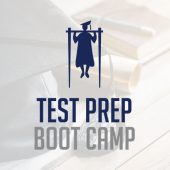How to Research and Compare Colleges Effectively: A Step-by-Step Guide
Choosing the right college is a major decision that can impact your academic experience, career opportunities, and overall happiness. With thousands of colleges to choose from, how do you narrow down your options? The key is effective college research.
By following this step-by-step process and using tools like College Navigator, you can confidently compare colleges and make an informed decision.
Step 1: Identify Your Priorities
Before diving into research, take time to reflect on what matters most to you in a college. Ask yourself:
- Academics: Does the school offer my intended major? Are there strong internship or research opportunities?
- Location: Do I prefer an urban, suburban, or rural setting? Is the climate important to me?
- Size: Do I want a small, medium, or large college experience?
- Campus Life: Are there clubs, athletics, or other extracurriculars that interest me?
- Cost: Can I afford tuition, or will I need financial aid and scholarships?
- Career Outcomes: Does the school have strong job placement rates and alumni networks?
Once you have a clear idea of your priorities, you can begin researching colleges that match your criteria.
Step 2: Use College Navigator to Gather Key Information
College Navigator is a free, government-backed resource that provides up-to-date data on thousands of colleges. You can search for schools by location, programs, tuition, and more.
Here’s how to use it effectively:
- Search for Colleges – Enter filters based on location, school type (public/private), degree level, and other preferences.
- Review College Profiles – Each college page includes tuition costs, student demographics, graduation rates, and more.
- Compare Multiple Schools – Add schools to your “Favorites” list to compare side by side.
By using College Navigator, you can get unbiased, data-driven insights to help you make a more informed decision.
Step 3: Explore College Websites and Virtual Tours
Once you’ve created a shortlist, visit each college’s official website. Look for details on:
- Academic programs and faculty
- Student housing and campus facilities
- Scholarships and financial aid options
- Clubs, athletics, and extracurriculars
Many colleges also offer virtual tours, which allow you to explore campus life from home. Websites like YouVisit and CampusReel provide 360-degree tours and student-led insights.
Step 4: Check Rankings and Reviews (But Don’t Rely on Them Too Much!)
College rankings, such as those from U.S. News & World Report or Niche, can provide valuable insights, but they shouldn’t be the only factor in your decision. Rankings are based on broad criteria that may not reflect what’s most important to you.
Instead, look at:
- Student and alumni reviews on sites like Niche and Reddit.
- Employment rates and average graduate salaries, available on College Scorecard.
- Accreditation status, ensuring the school meets academic standards.
Step 5: Visit Campuses (If Possible)
If you have the opportunity, schedule campus visits to get a feel for the environment. During your visit:
- Take a guided tour to see dorms, classrooms, and common areas.
- Sit in on a class to experience the teaching style.
- Talk to current students about their experiences.
- Eat in the dining hall to see what daily life is like.
If visiting in person isn’t possible, many schools offer live virtual Q&A sessions with admissions counselors and students.
Step 6: Compare Costs and Financial Aid
Cost is a major factor in choosing a college. Use these tools to estimate affordability:
- Net Price Calculator – Available on most college websites, it estimates what you’ll actually pay after financial aid.
- FAFSA and Scholarship Opportunities – Explore federal aid options and search for scholarships on platforms like Fastweb and Scholarships.com.
- Cost vs. Value – Consider the return on investment by looking at average graduate salaries and student loan debt levels.
Step 7: Weigh Pros and Cons & Make Your Decision
Once you’ve gathered all your research, create a comparison chart listing:
| College | Tuition & Fees | Graduation Rate | Student-Faculty Ratio | Campus Life Rating |
|---|---|---|---|---|
| College A | $25,000/year | 85% | 12:1 | Excellent |
| College B | $30,000/year | 78% | 15:1 | Good |
| College C | $22,000/year | 90% | 10:1 | Great |
Use this table to visually compare your top choices. Ask yourself:
- Which college aligns best with my academic and career goals?
- Where do I feel most comfortable and excited to attend?
- What is the best financial option for me?
Final Thoughts
Choosing the right college requires thorough research, thoughtful comparison, and personal reflection. By following these seven steps and utilizing tools like College Navigator, you can make a confident, well-informed decision about your future.
Remember, there’s no single “perfect” college—only the best fit for you. Start researching today and take control of your college journey!
Ready to Find the Perfect College for You? Let’s Talk!
Choosing the right college can feel overwhelming, but you don’t have to do it alone! Get expert guidance tailored to your goals with a free introductory consultation.
✅ Personalized college selection advice
✅ Insights on applications, essays, and financial aid
✅ Expert answers to all your college prep questions









